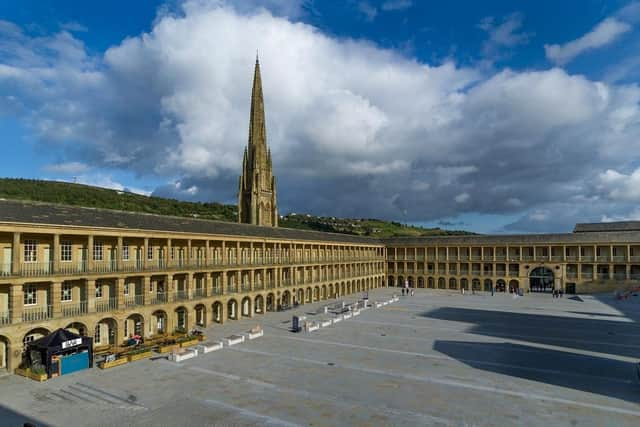The Piece Hall Halifax: The history of West Yorkshire’s 18th century cloth hall now a cultural hub for bars, restaurants, shops, art and cafes
The Piece Hall was used for handloom weavers to sell woollen cloth pieces they had produced and is one of the only remaining Georgian cloth halls in the world. A cloth hall was a historic building located in the marketplace of a European town.
Cloth halls contained trading stalls for the sale of mainly cloth but also leather, wax, salt and exotic imports such as silks and spices. The Piece Hall was instrumental in the trading industry in hand woven textiles to the pre-industrial economy of the West Riding of Yorkshire, from the Middle Ages to the early 19th century.
Advertisement
Hide AdAdvertisement
Hide AdFollowing the mechanisation of the cloth industry, the Piece Hall was transformed into a public market; it is now the cultural hub for the arts, crafts and independent shops.


History of the Piece Hall, Halifax
The popular landmark first opened on January 1, 1779, with 315 separate rooms located around a central open courtyard. Its purpose was for depositing and exposing to sale the worsted and woollen goods manufactured in Halifax.
A competitive market during that time period meant bringing together merchants and buyers together in one place.
Originally, two sites were planned, one at Talbot Croft and the other at Cross Field; this was used for the construction of a bus station in 1948. Talbot Croft was chosen in the end and bought in September 1774.
Advertisement
Hide AdAdvertisement
Hide AdThe Georgian building was a vital part of the Industrial Revolution and cloth trade, not just to the history of Halifax and West Yorkshire, but to the country as a whole for more than 600 years between the 12th and 18th centuries.
Recent history of the Piece Hall
Over the years, the industrial revolution shifted away from the small producers and traders as new larger mills in Halifax traded directly with merchants and exporters. So following years of decline in the industry, the Piece Hall was bought out by trustees in 1868 by Halifax Corporation.
They transformed it into a wholesale market hall and some of the small rooms were joined together to increase the size.
On November 3, 1954 the Piece Hall was listed as a Grade I building due to its historic interest, its rarity and its architectural interest and layout.
Advertisement
Hide AdAdvertisement
Hide AdIn 1971, businesses were spread out elsewhere throughout town and demolition of the Piece Hall was considered after it was deemed unsuitable for a wholesale market. Government grants were offered and the Halifax Corporation received funding to make the building a tourist attraction. The sheds which were built in the 19th century were knocked down and the courtyard landscaped.
The new Piece Hall opened on July 3, 1976 and the museum-art gallery closed in 1998. The Heritage Lottery Fund awarded Calderdale Council the first round of funding to restore and redevelop the Piece Hall in 2010. It reopened on August 1, 2017 following a £19 million restoration project which started in 2014.
It hosted its first major music event which was headlined by Father John Misty and the Piece Hall Trust was set up as a charity responsible for managing the historic building.
Comment Guidelines
National World encourages reader discussion on our stories. User feedback, insights and back-and-forth exchanges add a rich layer of context to reporting. Please review our Community Guidelines before commenting.
